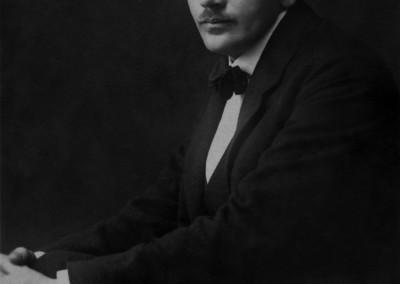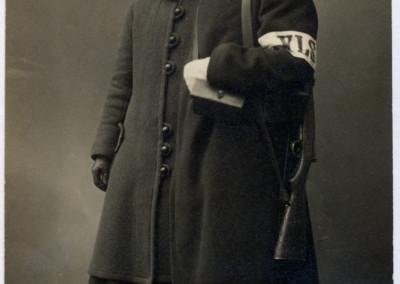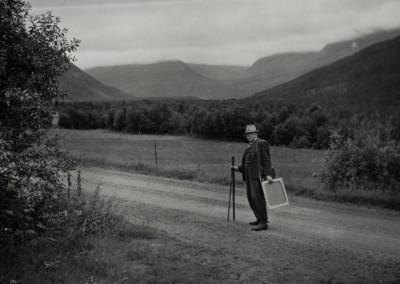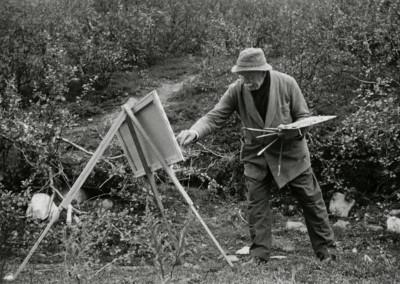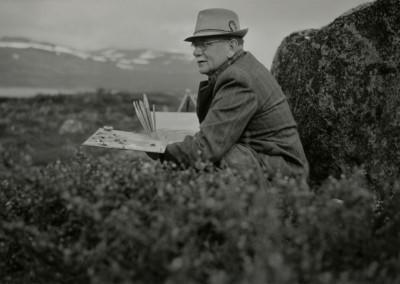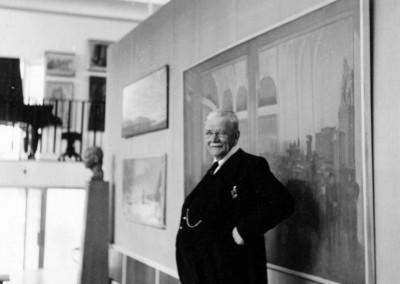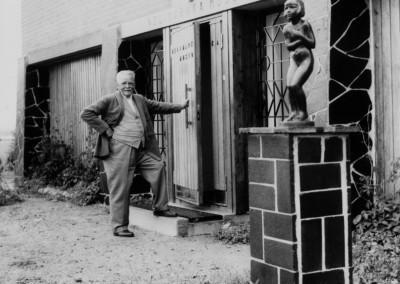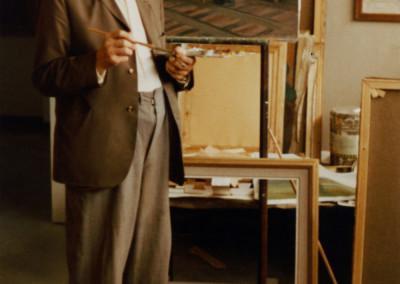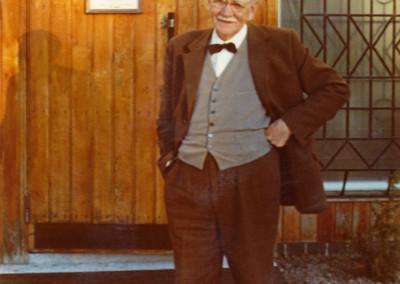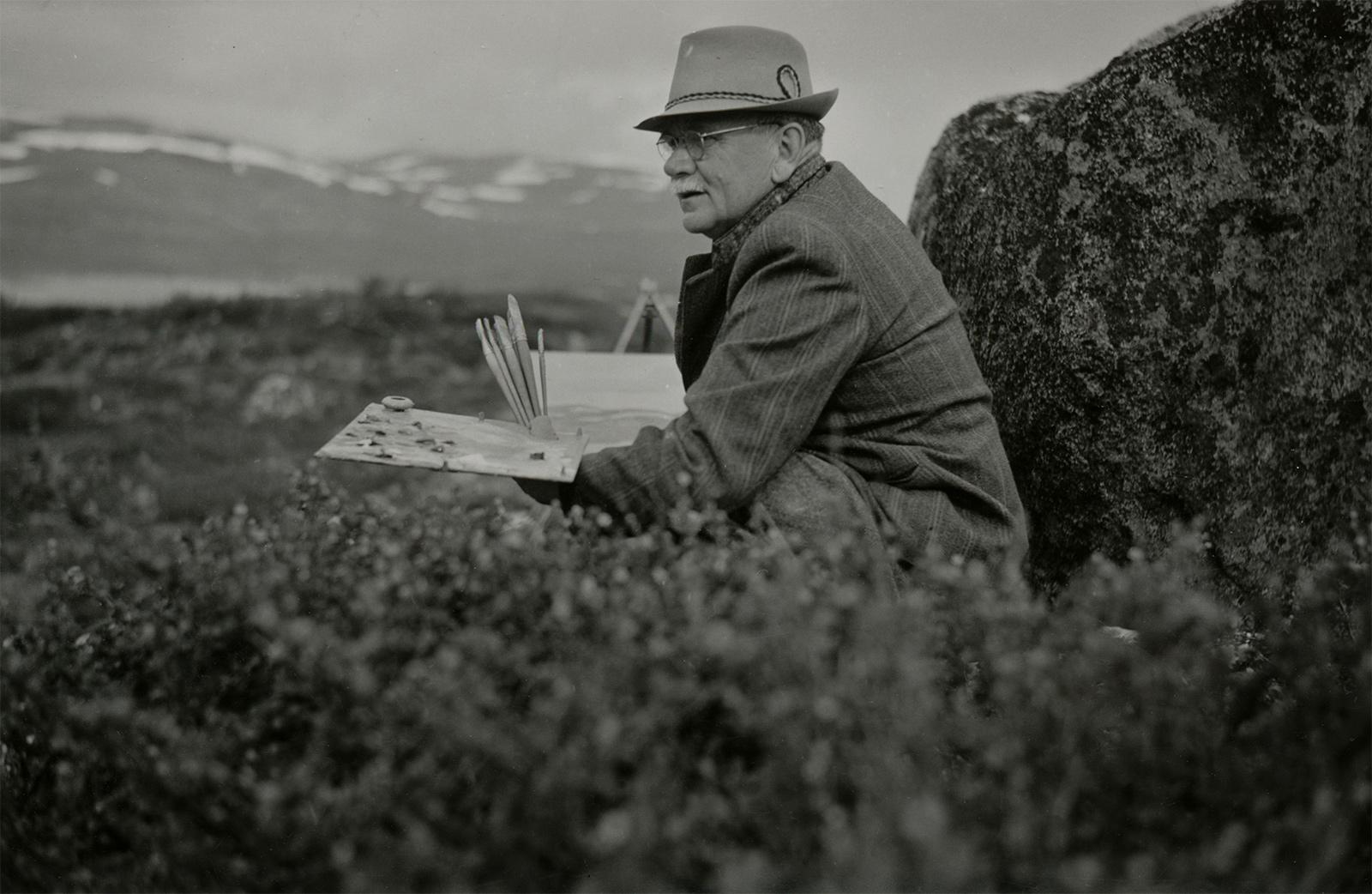
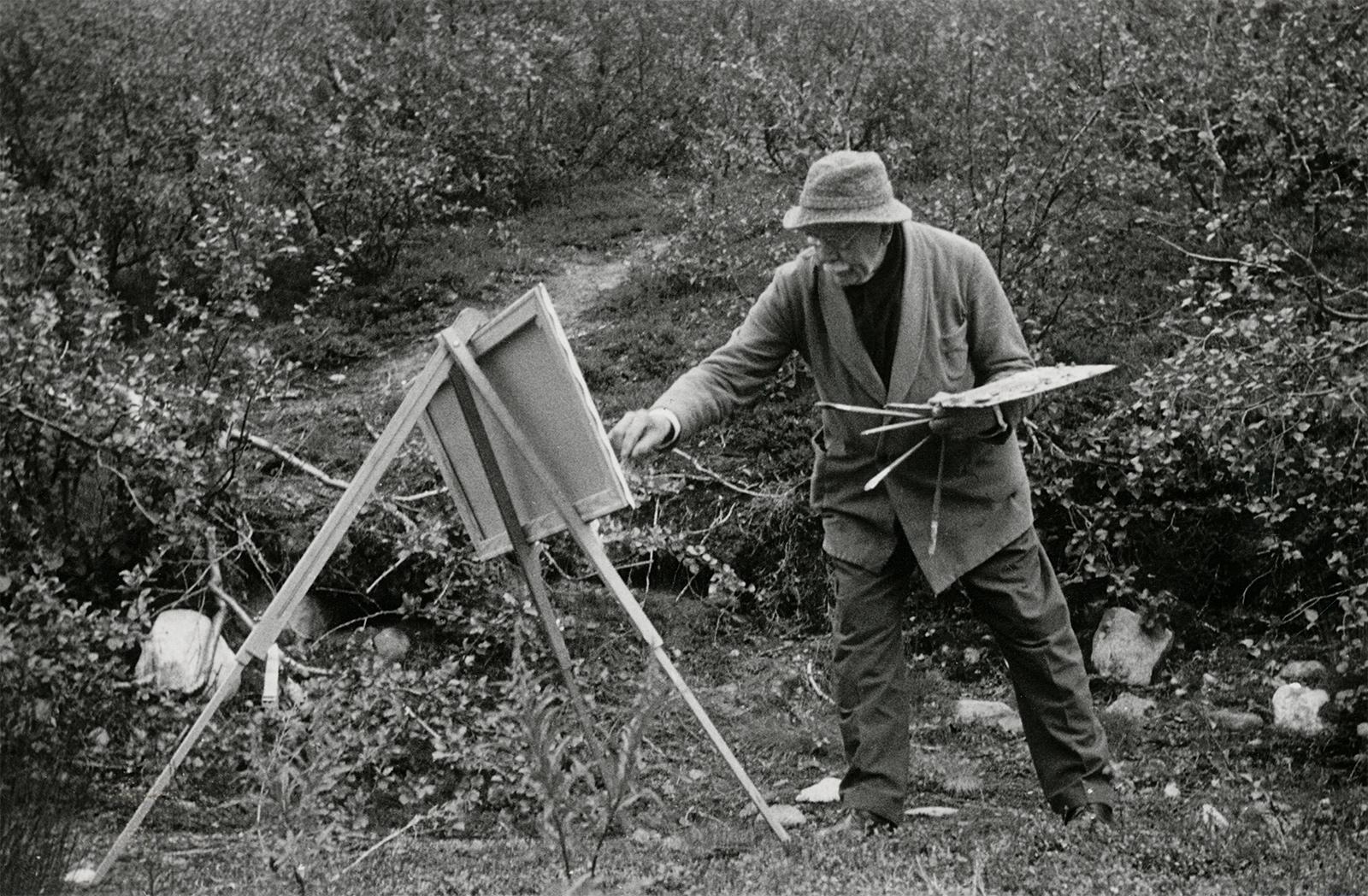
The painter was interested in the Southern Ostrobothnian landscape already at a young age and in the spring 1915 he was invited to come and paint the Lapuanjoki River in Alahärmä. On the same trip, he met his future wife, Saima Alaviitala. The couple married on New Year’s Eve in 1918 and had four children: Eero Jaakko, Helena, Antti and Tuomas. The family’s first home was in Helsinki.
Although Nelimarkka received the State Art Prize in 1927 for his painting Three Men, he experienced a professional crisis at the turn of the 1920s and 1930s and wanted to change his profession. He began planning to establish his own art school and obtained the qualification of a drawing teacher in 1931. The artist built his own villa in the birthplace of his parents in the village of Pekkola in Alajärvi. The landscapes of Alajärvi ignited the enthusiasm for painting again and Nelimarkka said: “Now that Ostrobothnia is under my feet, the landscapes are starting to succeed.” This was true and Nelimarkka’s style underwent a change, the so-called Landscape of Nelimarkka was born.
The artist was deeply concerned about the state of art in Ostrobothnia and began to establish his own union for Ostrobothnian artists. The Ostrobothnian Artists’ Association was founded in 1943 and its goal was to make art known in Ostrobothnia and elsewhere.
After the wars, the paintings began to sell and the artist found himself a relatively wealthy man. He had the opportunity to develop his dream of an art school by founding his own foundation, The Nelimarkka Foundation in 1945. Its art collections served as a starting point for the Nelimarkka Museum, which was later built near the villa. However, the idea of an art school remained at the level of art courses.
After the Nelimarkka Museum was built in 1964, the artist spent most of his time in Alajärvi. He kept his museum open, painted villagers in their own chores and landscapes in different seasons. Long trips abroad came to an end and Nelimarkka was awarded the title of professor in 1966. The artist-professor spent the last summer of his life in Alajärvi. Eero Nelimarkka passed away in his home in Helsinki, Töölö in November 1977 and was buried in Hietaniemi Cemetery.

